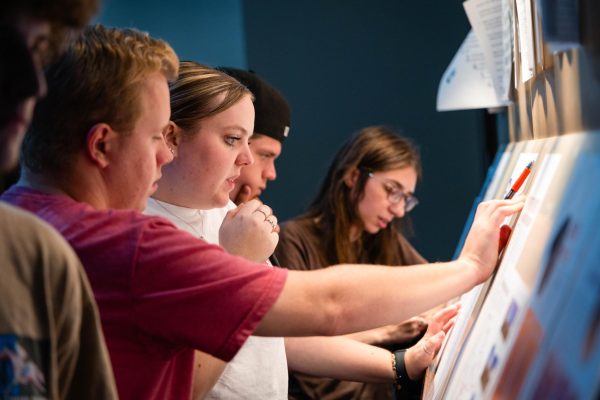Blackout brought to light glitches in the system
November 18, 2003
And then there was no light.
In case you were left in the dark – and if you had a class in one of several buildings last Tuesday, you would have been – the Hill is still reeling after a partial blackout.
A power failure Tuesday left several buildings without electricity for 12 hours. Those buildings (Cherry Hall, Science and Technology Hall, Gordon Wilson Hall, Helm Library, Garrett Center and Environmental Sciences and Technology Building) have since been operating with 50 percent power and will continue to do so until at least this weekend.
These things happen. We completely understand how man-made mechanical devices can mess up. But what we don’t quite get is why it took so long to offer a few remedies to the situation.
That doesn’t mean we’re blaming anybody for the 12 hours it took to get the power back on. We realize that fixing cables that are at least 50 years old not only takes time but creativity.
The failure was caused by the malfunction of one of two cables in a conduit that supplied power to all those buildings.
Facilities Management workers and others managed to temporarily fix the conduit and allow partial capacity. But again, with 50-year-old cables, who knows how long that can last?
We are just glad that you guys were able to somehow bubble-gum and tape the things back together.
But the logistics surrounding the technical part of the cause of this blackout are another issue entirely. What needs to be addressed here is the lack of communication and an apparently poor plan about how to disseminate this kind of problem to the masses on campus.
Facilities Management did send out a campus-wide e-mail explaining the blackout and telling everyone which buildings would be without modern conveniences for the day.
The only problem with that is it didn’t go out until 2 p.m. Tuesday. That is more than 12 hours after the initial reported blackout. How many campus officials does it take to send an e-mail? Not only that, but many students never even got that e-mail.
That, to us, says there isn’t a checklist of how to efficiently handle a situation like this, and if there is, it wasn’t consulted. Students, faculty and staff should have been made aware of the blackout well before they were.
It is not only courtesy, but it helps workers fix the problem faster because there aren’t masses of traffic around the work area.
Just something to think about in the future, because until the state antes up some funding for a cable replacement project that Facilities
Management has long planned for, this will no doubt happen again.
The least you can do next time is spread the word a little better.
This editorial represents the majority opinion of the Herald’s 10-member board of student editors.























